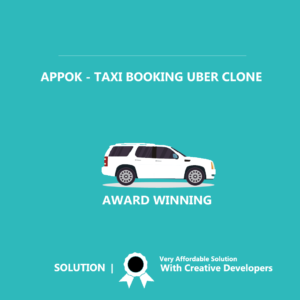How to Build an App Like Uber Eats?
Coronavirus Impact: Uber Eats Demand Soars Amid Pandemic
Uber CEO Dara Khosrowshahi uncovered in a meeting that Uber Eats saw a 10% expansion in the quantity of self-serve information exchanges by the US eateries in the primary seven day stretch of March.
According to the new reports by Statista, Uber Eats started things out in France with a 55% piece of the pie during the initial fourteen days of March.
Uber Eats has purportedly seen a 30% expansion in the quantity of individuals pursuing their food conveyance administration since lockdown.
As indicated by a representative at Uber Eats, the organization saw a 20% expansion in the quantity of eatery contracts in Japan in April when contrasted with the earlier month.
This emotional upsurge has built up a distinct fascination among restaurateurs to assemble a food conveyance application like Uber Eats. On the off chance that you have an arrangement to begin an online food conveyance administration in the midst of the COVID-19 emergency, at that point this guide will give you a top to bottom knowledge into how to make a food requesting application as effective as Uber Eats.
Plan of action of Uber Eats
Since its commencement, the innovation driven plan of action of Uber Eats has motivated sprouting business people to begin their online food conveyance business. The Uber Eats application assumes double parts: it’s a café aggregator just as a conveyance specialist.
Uber Eats utilizes an aggregator model that rundowns the accomplice eateries in the application. This conventional food conveyance model empowers clients to request a food conveyance demand which is seen by the eateries to finish the request. The request conveyance is satisfied by the cafés itself.
The organization upholds cooperating cafés with complete coordinations support. The food requesting monster utilizes its strategic organization to convey orders from cafés that don’t have assets or data transmission to give food conveyance to their clients.
How Does Uber Eats Work?
Uber Eats is a three-way commercial center that interfaces eateries, clients and conveyance specialists. Different cafés list their image and menu on the application. The clients look for the eateries situated in their general vicinity and put in the request. The conveyance kid gets the request from the café and conveys it at the client’s doorstep.
Uber Eats Key Players
Eateries: Restaurants oversee food orders and update menus on the application by checking food things accessible/inaccessible. They can change the café name, contact data and opening and shutting hours according to their accessibility. They can likewise choose the cost of every thing showed on the menu.
Clients: Uber Eats gives the accompanying requesting alternatives to its clients:
Ongoing Ordering: The clients pick their preferred food things from the rundown of eateries accessible in the territory. It is a helpful element for the individuals who wish to get their food following submitting a request.
Custom Ordering: The clients plan their orders ahead of time according to their comfort. They can tweak their orders regarding the conveyance date, objective location and time.
Conveyance Agents: Uber Eats conveyance young men are autonomous people who get food from the cafés and convey it to the clients’ location. They can acknowledge or dismiss the request ask for and deal with numerous conveyances at a solitary time. They get the conveyance undertakings based on their area and nearness to the client just as the café.
Income Model of Uber Eats
Conveyance Fees from Customers
The conveyance charges are isolated into three classifications:
Conveyance Fee: The clients pay a modest quantity of conveyance expense that relies upon area and the accessibility of messengers. The all out charge may differ from 1$ to 5$ contingent upon the market in which the organization is working.
Administration Fee: Uber Eats charges administration expenses of 15% of the request’s subtotal.
Request Fee: A little request expense of $2 which is charged if the request sum is under $10.
Discretionary Subscription Fees from Customers
The organization has a discretionary membership model to bring in cash. Clients have the alternative to pay a month to month membership charge of $9.99 to profit the “Eats Pass”. It permits supporters of get 5% off on the orders more than 15%, with no conveyance charge.
Commission Fees from Restaurants
Uber Eats slices 15 to 40% of the all out esteem on each request satisfied from the café accomplices. The cutoff rate is chosen dependent on development and hold of the eatery on the lookout.
Promoting Fees from Restaurants
The café pays an ad expense to the organization to come up at top ventures on the application and to get more foothold and deals. The organization brings in cash by giving cafés a spot in the highlighted segment of the application.
Since you have a profound comprehension of Uber Eats’ insights, plan of action, and how does the food conveyance organization produce income. How about we acquire bits of knowledge into how you can build up a food conveyance application that can outperform Uber Eats.
A Step-by-Step Guide to Develop a Food Delivery App
Building a food conveyance application like Uber Eats is a difficult errand that includes assembling a great deal of segments. Accordingly, having an unmistakable guide on concocting your food conveyance application is important to make an imprint in the online food industry. Accepting Uber Eats for instance, we have clarified some fundamental advances that restaurateurs should follow to begin comparable online endeavors.
Stage 1: Conduct Market Research
The initial step while making a food conveyance application is to investigate profoundly about your rivals, target crowd and the most recent food industry patterns. To get a strong handle of the current market circumstance, you should discover answers to the accompanying inquiries:
Who are your rivals and what sort of administrations they are offering to their clients?
Who are your objective clients?
Which highlights you should remember for your food conveyance application to get everyone’s attention?
What are the hot patterns in the online food industry?
Stage 2: Select Food Delivery Model
Subsequent to leading intensive statistical surveying, the following stage is to pick a food conveyance model that can meet your business objectives just as client’s requests. There are two kinds of food conveyance model:
Request Only model
Request and Delivery Model
Request Only model versus Order and Delivery Model: Key Differences

![How to Build an App Like Uber Eats in 2021 Worth [$] To You? uber eats app development](https://appok.in/wp-content/uploads/asian-man-courier-scooter-delivering-food-town-streets-with-hot-food-delivery-from-take-aways-restaurants-home-express-food-delivery-shopping-online-concept_73503-1934-300x200.jpg)



